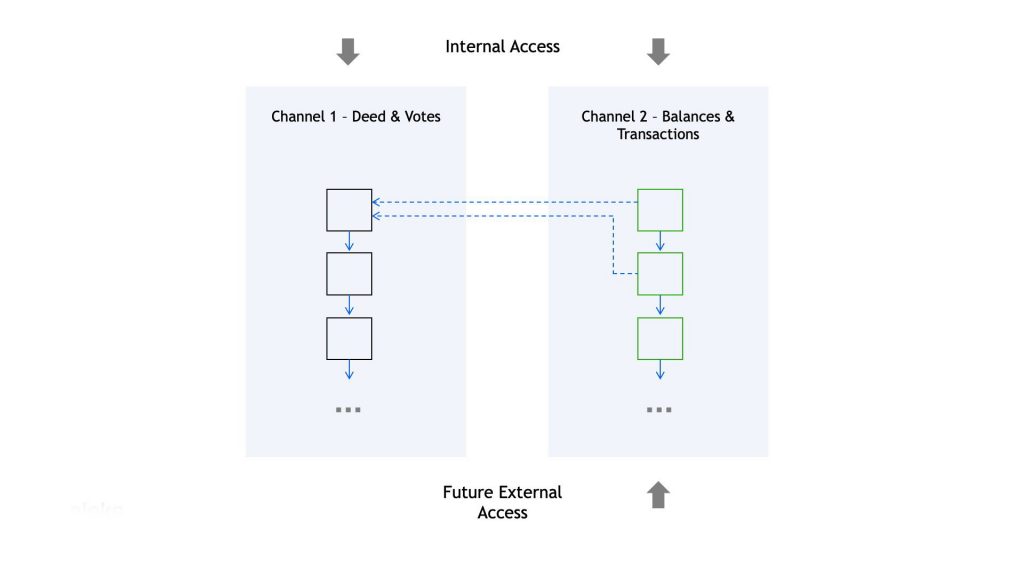A recent announcement by JP Morgan took many in the finance industry by surprise. Most remember Jamie Dimon calling crypto-currencies a "fraud" and the worst idea since tulip bulbs. Moreover, the statement itself was met with a fair amount of scepticism, too. The crypto-currency purists were criticising it as a fake coin, and Nouriel Roubini was quick to tweet about the private, centralised nature of JPM Coin that appears to violate the most important aspects of blockchain technology.
ELEKS is a technology company providing blockchain software development services; therefore, we focus primarily on the technical merits of any industry trend. JP Morgan's announcement of JPM Coin, or ‘Quorum’, opens an interesting discussion because it acknowledges the efficiency of blockchain transactions compared to more traditional financial networks.
Having already performed a number of blockchain implementations, we have an opinion on some of the available technology choices to the extent that they are public and suggest a different approach for future computing networks.
Rather than creating each blockchain implementation from scratch, we decided that we needed something resembling a platform or framework that can be reused for a wide variety of business problems, including enterprise data management.
Blockchain and distributed ledger are often used as synonyms. Technically speaking, this is incorrect since blockchain is only one possible implementation of distributed ledger technology. Others include Directed Acyclic Graphs (DAG) or hybrid implementations. The technology described in this article is a hybrid implementation.
The ELEKS Coin platform contains a resilient framework for business solutions and is built on the backbone of a well-tested blockchain network.
Unlike a crypto-currency, ELEKS Coin focuses on mechanisms that solve real problems from secure document management to smart contracts and financial transactions. However, unlike the Ethereum-based JP Morgan solution, we needed to build a framework that could support complex requirements like truly distributed ledgers, federated ledgers and simultaneous independent transactions, rather than the linear blockchain model that served as the blueprint for Bitcoin and its many relatives.
Taking a Test Drive: Digital Tokens and Employee Recognition Programme
Our past work on securing document management on blockchain gave us the experience needed to make the platform work for our customers in many commercial projects. By early 2018, we considered the platform mature enough to test it in a simple social experiment: an employee recognition programme about to be introduced at ELEKS.
This low-risk test environment allowed us to verify the robustness of the system and its capacity under some load, albeit less than what we would expect in a commercial deployment.
To encourage adoption, we implemented a gamified front-end allowing ELEKS employees to reward others for outstanding work — whether it be for innovation, team initiatives, process advancements that benefit the company as a whole or a simple act of kindness. Any employee can nominate any other ELEKS employee (except themselves) for a reward. The first version tracks all votes cast in the system and automatically generates digital tokens that can be exchanged for coffee rewards.
Up to this point, our test implementation of the framework implements a blockchain network that automatically tracks various streams (‘channels’ in Hyperledger lingo):
- Deeds – activities of employees in the company
- Votes – people decide if an activity (a deed) is worth a reward
- Balances – the balance of digital tokens; counted for doers, observers, voters (in different proportions) after a voting period closes
- Transactions – transfers of digital tokens, from person to person or a transaction of buying rewards.
At first glance, this looks like a straightforward model where almost any blockchain technology should be able to satisfy the requirements; however, even simple steps like the digital tokens emission process described below are more complex than initially expected.
Technology Stack: Reasons for Hyperledger
At every step of the design process, we discovered additional requirements asking for flexible API implementations and the ability to deviate from a single path.
When comparing the ELEKS platform with an Ethereum-based implementation like JPM Quorum, some design differences stand out:
- Solution vs Toolkit. Where Ethereum shines as a ready-to-use solution, it also finds its most important limitations — it can be used immediately, but only as prescribed. This limitation was one of the main reasons for us to base the ELEKS platform on Hyperledger, which acts more like a constructor kit for a blockchain network.
- Integration points. Being able to do some of the low-level implementations allowed us to integrate with other applications easily. In our case, Active Directory was a necessary component of the overall system, and integration via Hyperledger turned out to be far easier than with Ethereum.
- API maturity. By contrast, the Hyperledger implementation makes use of a flexible set of APIs that more closely match the real-life solving of business problems.
- Chaincode vs Smart contracts. Hyperledger’s chaincode enables a better and more low-level approach to network set-up. More importantly for commercial implementations, unlike smart contracts, chaincode does not need to be made public.
- Network set-up. The one area where Ethereum networks have an advantage is in configuration and set-up. Due to its nature as a constructor kit, Hyperledger requires considerable work to configure and tweak the virtual machines, whereas Ethereum works mostly out of the box.
- Channels. Hyperledger’s ability to separate logically different streams into ‘channels’, which are almost like independent blockchains within one ledger system, make an enormous difference when modelling real-world problems. It allowed us to cleanly separate the logic for deeds, votes, balances and transactions.
The solution context diagram of the final implementation:
Once the backbone was in place, the Hyperledger network and its components were connected to the Web interface for the programme participants, and to Active Directory for authentication and authorisation. At this point, we were able to take advantage of a different type of specialisation inside ELEKS, creating a user interface that is easy to use and covers network complexity. You can check out the article on how to create better user interfaces for blockchain.
The Future: Where Things Go from Here
Even though we are not in the business of predicting the future, we do see current trends that can be extrapolated into a realistic technology path. The most exciting aspect is that after a period of scepticism, blockchain technology is now being received as a credible solution. Although maybe not to the problems early crypto-pioneers predicted, but to a different set of real issues, all sharing one criterion: the need for an immutable (and therefore genuinely tamper-proof) ledger that can accurately reflect the history of all transactions.
The applications for a tamper-proof, resilient and easily audited system range from legal documents, financial transactions, monitoring of controlled substances, through to e-government applications, resource allocation problems, identity verification and simple reward systems. It is likely true that future systems will gain in complexity compared to what we see today. Moreover, some extensions to current technology already begin to appear in the shape of truly federated ledgers or autonomous identity systems.
Precisely which of these areas will see the next wave of blockchain implementations remains to be seen; however, we are confident that our current platform allows us a flexible and resilient execution of the business problems we have found so far, and likely many new ones as well.
Let’s discuss how distributed ledger technology can deliver benefits for your business. Get in touch with us.
By Anatoliy Lytovchenko and Klaus Sonnenleiter.
Related Insights





















